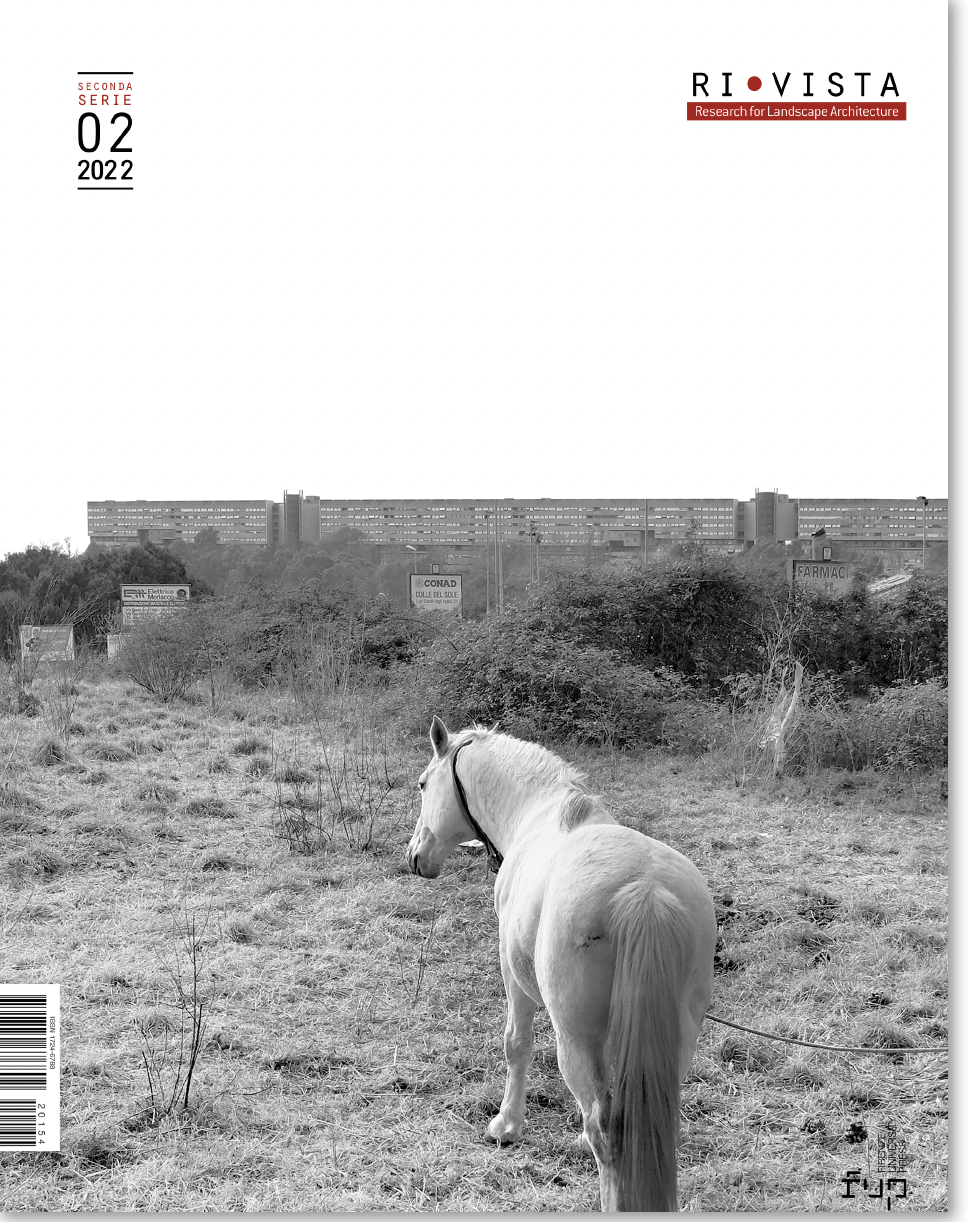Considered during the second half of the 19th century as a void lacking peculiarities, scarcely recognised and as a suspended entity ‘waiting for’, today open space has returned to the forefront of the design scene. As the quintessential place for rights and for promoting social equity and ecological democracy, open space is able to generate different relationships, be they biotic, functional, perceptual, temporal, social or cultural.
According to Lawrence Halprin, the combination of open spaces establishes a sort of choreography within which movement and life take place. For Georges Perec, space is a doubt that must be constantly identified and shown, definable where our gaze stops, on which our sight stumbles: “living is passing from one space to another trying to not get hurt too much”.
For Martin Heidegger, if the Open (das Offene) is synonymous with the boundless, the unlimited, in which human beings live as spectators, space is nevertheless the necessary and indispensable condition for existence. John Dixon Hunt further suggests that open space contains a wide range of meanings and is therefore an umbrella term that encloses a multitude of realities: on the one hand, open space as emptiness, with nothing in and little of importance, on the other hand, it is also an attitude to accept spontaneity, changes and ideas. But above all, open means ‘open-air’. Gilles Clement writes that diversity finds refuge in the “undecided spaces, devoid of function, that are difficult to name”.
Despite so many definitions, some of those very fascinating indeed, open space exists, with its historical background of signs, and it is an indispensable condition for the landscape and for the quality of life on this planet.
Considered as an adjacent lot, or as the ‘reflection’ of architectural volumes, it is counted, sized, measured, typified, emptied and interpreted as a container into which solutions for social needs and benefits can be poured, even with attitudes that are not indifferent to fashion. Are we therefore really able to identify what an open space really is and to give it its own legitimacy of existence? And is it possible to preserve its uniqueness in a complex and comprehensive reading?
Welcoming other disciplinary approaches, this issue of Ri-Vista aims to collect images, experiences and reflections for a reading that acknowledges the freedom and diversity of every open space, both in its individuality and in its belonging to more complex systems, useful for possible design explorations that, although promoted by contemporary needs, allow its being to be preserved.
Keywords: Genius loci, Signs, Classification, Imaginary
The call is open until November 30th 2024.
Registration and login as Author with the Ri-Vista system is required to submit and follow the submission process online. Later, the account is necessary for following the status of your submission.
The proposals have to be unpublished and written in Italian or English; the text can be of 20,000 to 30,000 characters, including spaces, title, authors, abstract, keywords, captions and references. The proposals have to include a minimum of 5 — a maximum of 10 pictures with good definition (at least 300 dpi/inch and 25 cm the smallest side) free from publishing obligations or accompanied with the specific permission.
The selected papers will be published in the thematic section of the 1 | 2025 issue of Ri-Vista.
DOWNLOAD Ri-Vista call for paper 1-2025

